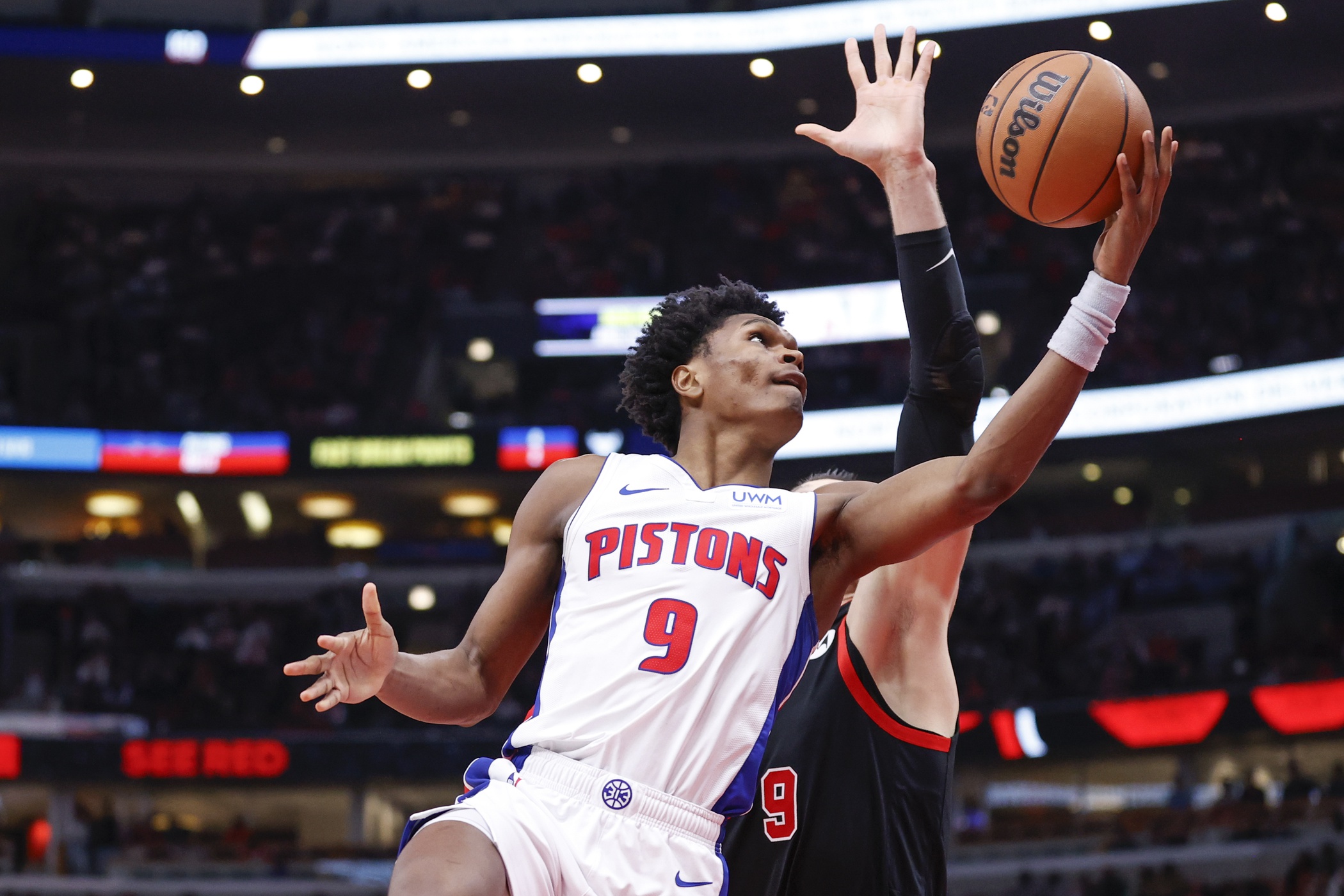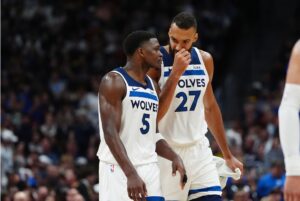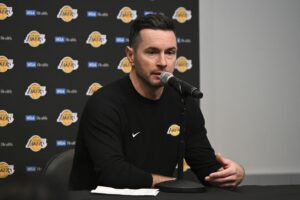When the Detroit Pistons took the court for their 2024-25 season opener, 2023 No. 5 pick Ausar Thompson was notably absent. After being diagnosed with a blood clot in late March, the 21-year-old is still awaiting clearance from the NBA’s Fitness-to-Play Panel. This has caused some consternation among fans, as Thompson has demonstrated the potential to be a perennial All-Defensive selection.
For their sake, it’s time to buckle up. Here’s some relevant excerpts from Article 22 (Player Health and Wellness) of the 2023 NBA-NBPA Collective Bargaining Agreement on the Fitness-to-Play Panel.
22.11a— The parties shall establish panels of physicians (each a “Fitness-to-Play Panel”) for the purpose of determining, as set forth in this Section 11, whether players with potentially life-threatening injuries, illnesses, or other medical conditions (or any of the foregoing that have the potential to result in paralysis or other permanent spinal injury) are medically able and medically fit to practice and play basketball in the NBA.
Each Fitness-to-Play Panel shall consist of one (1) physician appointed by the NBA, one (1) physician appointed by the Players Association, and one (1) physician appointed by agreement of the first two (2) physicians. Each member of each Panel shall: (i) be board certified and fellowship trained in his/her field of medical expertise; (ii) be a specialist in the subject matter of the applicable Fitness-to-Play Panel; and (iii) have at least ten (10) years of post-fellowship clinical experience. Each Panel will operate by majority vote, including, but not limited to, its fitness to play determinations…
22.11b— The parties shall create one or more Fitness-to-Play Panels as are necessary to address injuries, illnesses, or other medical conditions that are potentially life-threatening or have the potential to result in paralysis or other permanent spinal injury for the player (e.g., cardiac illnesses and conditions, blood clots, and other blood conditions and disorders).
22.11d-2 —The determination to be made by the Panel is whether, in the Panel’s reasonable medical judgment and experience, and having considered current medical knowledge and the best available objective evidence: (i) the player is medically able and medically fit to perform his duties as a professional basketball player; and (ii) performing such duties would not create a materially elevated risk of death, paralysis, or other permanent spinal injury for the player. Where there are authoritative medical guidelines on fitness for athletic participation and a particular injury, illness, or other medical condition (e.g., the American Heart Association/American College of Cardiology Scientific Statements on Eligibility and Disqualification – Recommendations for Competitive Athletes with Cardiovascular Abnormalities), the Panel will consider such guidelines in making its determination.
Using recent examples from other players, it’s clear that Thompson could be in for a long ride.
Why Pistons’ Ausar Thompson’s Blood Clot Issue Is So Complex
Lessons From Keyontae Johnson
Prior to 2023 No. 50 pick Keyontae Johnson being drafted, he had to await a decision from the NBA’s Fitness-to-Play Panel. This wasn’t an extraordinarily long process, as he declared for the 2023 NBA Draft on April 24th and was cleared on May 26th.
However, Johnson had effectively missed two years of his basketball career while recovering from myocarditis. In Dec. 2020, Johnson collapsed during a game and though he rejoined the team a couple of weeks later, he only played one more game for Florida. He transferred to Kansas State in Aug. 2022.
When the Panel ruled on Johnson, they may have taken his two-year cool down period into account. In that time, the young forward was able to focus on his health. It seemingly culminated in his ability to make it through the 2022-23 season, which could have also factored into their decision.
As this relates to Thompson, doctors may want a bit more distance between his diagnosis and return.
Lessons From Chris Bosh
So far as blood clotting, Hall of Fame forward Chris Bosh is the most well-known NBA player to have had their career sidetracked by the condition.
Bosh actually survived through multiple blood clotting incidents during his career. The initial diagnosis occurred in Feb. 2015, leading to him being ruled out for the remainder of the season. The clot was found to have traveled to one of his lungs.
Around the 2016 All-Star Break, Bosh was diagnosed with deep vein thrombosis; a blood clot in his leg. He eventually agreed to sit out for the remainder of the season. However, he took to Twitter, denying that his medical concerns were life-threatening.
#TeamBosh pic.twitter.com/VhindAFSaS
— Chris Bosh (@chrisbosh) March 10, 2016
That being said, he was prescribed blood thinners that he’ll be taking for the rest of his life. The problem for Bosh is that playing contact sports is dangerous for people on blood thinners. In even a best-case scenario, his career may have been significantly impacted.
Though Bosh wanted to cycle on and off his blood thinners, a medical expert suggested that it would be safer for him to do so if playing “twice a week—while skipping all full-contact practices,” per former Bleacher Report writer Howard Beck.
This might be a situation that teams would be willing to work with, but it’s obviously not ideal. So far as the Pistons are concerned, the question is how important it is for Thompson to play part-time at the risk of his life?
Lessons From Mizra Teletovic
In Jan. 15, former NBA forward Mirza Teletovic was diagnosed with bilateral pulmonary embolus, which denotes multiple blood clots in the lungs. Interestingly, he returned to the court that April rather than being shut down for the season. Unfortunately for Teletovic, his blood clots resurfaced in Dec. 2017. Though he was initially prescribed a 10-day rest period, the Milwaukee Bucks waived him in March 2018.
That being said, Teletovic provides a cautionary tale for Thompson. The Fitness-to-Play Panel could rule that he’s able to return to the court but that doesn’t mean his problems are over. There’s a very real possibility that there’s a recurrence, which would effectively end his NBA career.
The Last Word On Ausar Thompson
Thompson has the chance to have a long career just based on his floor as a defender. If he can start unlocking his offensive game, particularly as a point-forward archetype, he’ll be really interesting. Still, the excitement about what long-term potential isn’t nearly as important his long-term health.
Whether he returns in a month, a year, or is unable to resume his career, that decision will be made in his best interest.






